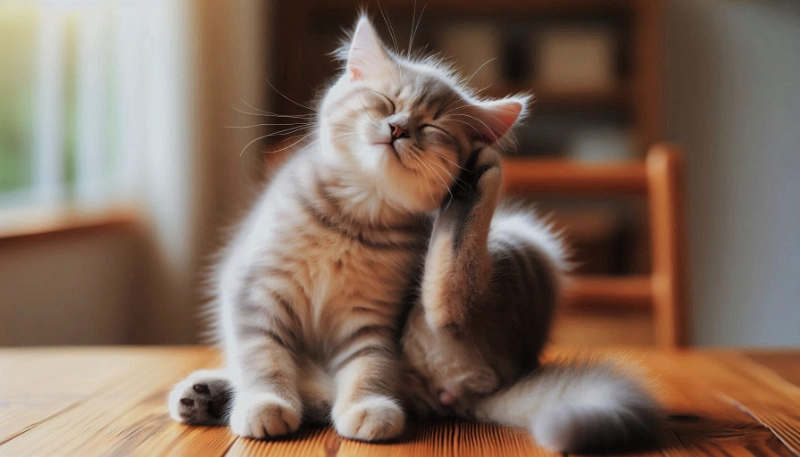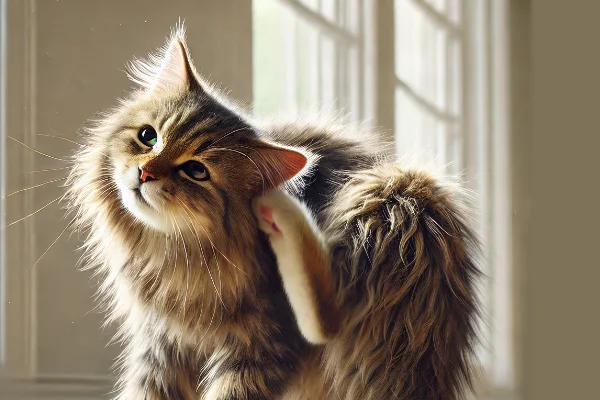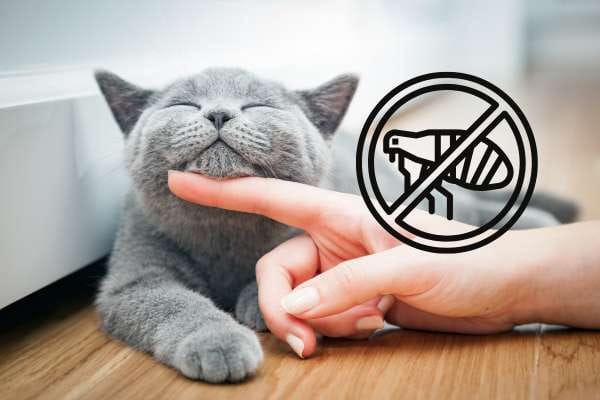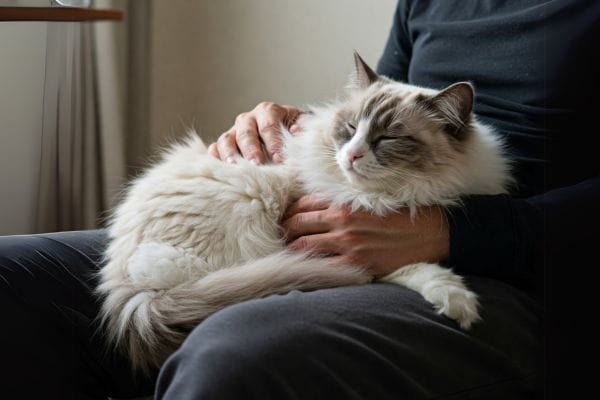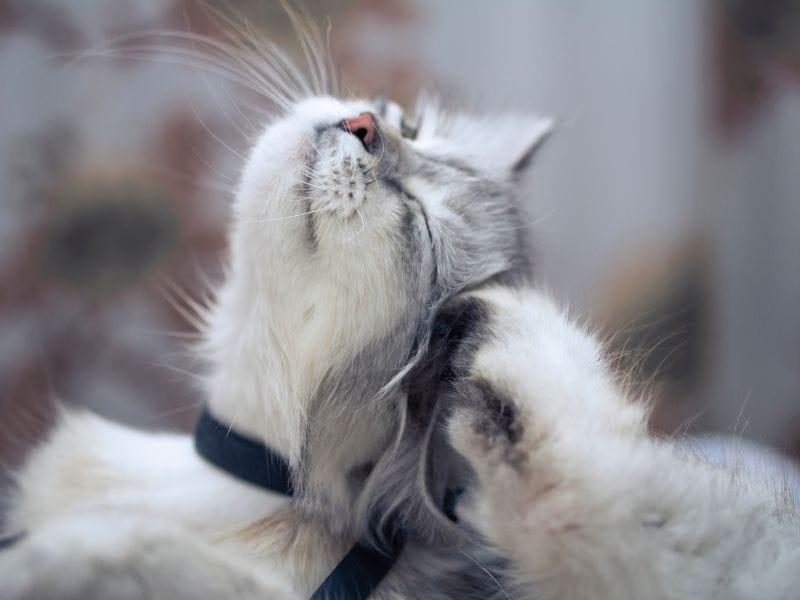
We may earn a commission when you purchase via our links at no extra cost to you.
We only share resources that meet our high standards
Why Cat Dental Care Matters
Cat dental care is often overlooked, yet it’s one of the most important parts of keeping your feline healthy.The American Veterinary Medical Association (AVMA) reports that 70% of cats show signs of dental disease by age three. Unfortunately, many owners don’t recognize the signs until problems become severe.
Common Dental Issues in Cats
- Gingivitis – gums inflamed by plaque buildup.
- Periodontal disease – infection spreads deeper, damaging teeth and jawbone.
- Tooth resorption – painful breakdown of tooth structure.
- Stomatitis – severe inflammation affecting the entire mouth.
Warning Signs
- Persistent bad breath.
- Drooling, blood on toys, or pawing at the mouth.
- Difficulty chewing, dropping food, or eating less.
- Red gums, visible tartar, or loose teeth.
Untreated dental disease can spread bacteria to vital organs like the heart, liver, and kidneys, reducing a cat’s quality and length of life. In this guide, you’ll learn how to clean your cat’s teeth at home, discover the best cat dental products, and understand when professional veterinary care is necessary—so your cat can stay happy, healthy, and pain-free.
How to Clean Your Cat’s Teeth at Home
Brushing is the gold standard of feline dental care, recommended by the Cornell University College of Veterinary Medicine. It may take patience, but even resistant cats can adapt if introduced slowly.
Step-by-Step Cat Teeth Cleaning
- Get your cat comfortable – gently lift lips daily so they get used to handling.
- Pick the right brush – finger brushes for beginners, angled brushes for deeper reach.
- Use cat-safe toothpaste – enzymatic pastes in poultry or seafood flavors.
- Start small – let your cat lick a dab of paste first.
- Brush gently – focus on outer surfaces of back molars where plaque builds.
- Keep it short – 30–60 seconds is enough at first.
- Reward your cat – use treats, praise, or playtime.
Alternatives if Brushing Isn’t Possible
- Dental wipes – swiped across teeth and gums.
- Dental gels/sprays – applied with a cotton pad or finger.
- Water additives – mixed into the water bowl to fight bacteria.
⚠️ Avoid using human toothpaste, baking soda, or hard bones. They are toxic or damaging to feline teeth.
Best Cat Dental Products to Try
Even if brushing isn’t daily, you can support your cat’s oral health with the right tools. Products with the VOHC (Veterinary Oral Health Council) seal are proven to reduce plaque or tartar by at least 20%.
Mini Reviews
1. Petsmile Professional Cat Toothpaste (VOHC-approved)

The only VOHC-approved toothpaste for cats. Uses Calprox to dissolve plaque biofilm and is safe to swallow. Flavors like poultry help with acceptance.
Pros: VOHC-approved, human-grade, safe if swallowed.
Cons: More expensive than others.
➡️ Best for owners seeking the most effective, vet-recommended product.
2. Virbac C.E.T. Enzymatic Toothpaste

Veterinary favorite with dual enzymes to inhibit plaque. Comes in poultry and vanilla-mint flavors.
Pros: Enzyme-powered, palatable, trusted brand.
Cons: Not VOHC-approved.
➡️ Best for picky cats that need flavor variety.
3. Greenies Feline Dental Treats (VOHC-approved)

Crunchy treats that mechanically clean teeth while cats chew. Cats love the taste, and VOHC backs their efficacy.
Pros: Affordable, tasty, VOHC-approved.
Cons: High in calories; can’t replace brushing.
➡️ Best for cats that resist brushing but enjoy snacks.
4. Purina DentaLife Advance Care Cat Treats (VOHC-approved)

Porous texture scrubs teeth more thoroughly than standard kibble. VOHC-certified and inexpensive.
Pros: VOHC-approved, widely available.
Cons: Only supplement brushing.
➡️ Best as a daily treat alongside brushing.
5. Oxyfresh Pet Dental Gel Toothpaste

Brush-optional gel using Oxygene to neutralize bacteria. Apply with brush or finger.
Pros: Brush or brush-free, safe if swallowed.
Cons: Not VOHC-approved.
➡️ Best for cats that tolerate finger application but dislike brushes.
6. Vetradent® Water Additive (VOHC-approved)

Scientifically formulated with Biotrate™ Technology, this colorless, odorless, and tasteless water additive supports pet dental health by reducing plaque and tartar.
Pros: VOHC-approved, easy to use, scientifically backed formula.
Cons: Pricey for some owners.
➡️ Best for owners of multiple cats that seeking a hands-off dental solution
7. Zymox Oratene Enzymatic Brushless Gel

Natural enzymes fight plaque, bacteria, and yeast. Great for cats with dry mouth.
Pros: Brush-free, supports oral microbiome.
Cons: Not VOHC-approved.
➡️ Best for senior cats or those with sensitive gums.
Best Cat Dental Products Comparison Table
| Product | Type | VOHC Approved | Best For | Price Range |
| Petsmile Professional Toothpaste | Toothpaste | ✅ Yes | Gold-standard brushing | $$–$$$ |
| Virbac C.E.T. Toothpaste | Toothpaste | ❌ No | Flavor-picky cats | $–$$ |
| Greenies Dental Treats | Treats | ✅ Yes | Snack-loving cats | $ |
| Purina DentaLife Cat Treats | Treats | ✅ Yes | Daily oral support | $ |
| Oxyfresh Dental Gel | Gel | ❌ No | Brush-free gel option | $$ |
| Vetradent® Water Additive | Additive | ✅ Yes | Brushing-resistant cats | $$–$$$ |
| Oratene Brushless Gel | Gel | ❌ No | Seniors/dry mouth support | $$ |
Professional Veterinary Dental Care
Even with perfect home care, most cats need a vet dental cleaning every year or two.
When to Seek Vet Dental Care
- Annual check-ups starting at age one.
- Earlier if tartar, bleeding, or mouth pain appear.
What to Expect at a Vet Cleaning
- Cat is placed under anesthesia.
- Teeth are scaled and polished.
- Dental x-rays check for hidden disease.
- Diseased teeth may be extracted.
Cost of Professional Cleaning
- Basic cleaning: $300–$500.
- Advanced (with x-rays and extractions): $700–$1,200.
While costly, it prevents infections and chronic pain that are far more expensive long-term.
Preventing Dental Issues in Cats
- Daily brushing or at least 3–4x weekly.
- Weekly checks – lift lips, check gums and teeth.
- Balanced diet – dental diets for high-risk cats.
- Vet exams – annual checkups for early detection.
Myths vs. Facts
- ❌ Dry kibble keeps teeth clean.
➡️ Truth: Most kibble is too small/hard to reduce plaque. - ❌ Indoor cats don’t need dental care.
➡️ Truth: Plaque comes from bacteria, not outdoor exposure. - ❌ Dental treats replace brushing.
➡️ Truth: They help, but brushing cleans more effectively.
Common Mistakes in Cat Dental Care
- Rushing into brushing → creates resistance.
- Using human toothpaste → toxic to cats.
- Ignoring mild gingivitis → can progress rapidly.
- Believing no bad breath = no problem → disease can exist silently.
FAQs About Cat Dental Care
1. How often should I brush my cat’s teeth?
Daily is ideal; 3–4 times per week is still effective.
2. Can dental treats replace brushing?
No—treats help but don’t reach all tooth surfaces.
3. What age should I start dental care?
Start in kittenhood for best results, but older cats benefit too.
4. Is bad breath always a sign of dental disease?
Often yes, but sometimes it signals systemic illness—see your vet.
5. Do indoor cats still need dental care?
Yes, they are just as prone to plaque and tartar.
6. How much does a professional cleaning cost?
Typically $300–$800 depending on severity.
Key Takeaways
- Most cats develop dental disease by age 3.
- Brushing is best, but VOHC-approved treats, gels, and additives help.
- Annual vet checkups and cleanings are essential.
- Prevention is cheaper and kinder than treatment.
Conclusion
Cat dental care is a cornerstone of your cat’s overall wellbeing. With a mix of daily brushing, smart product use, and professional care, you can prevent painful disease and help your cat live a longer, happier life.
👉 Next step: Start small—introduce brushing or try a VOHC-approved treat or water additive today.


